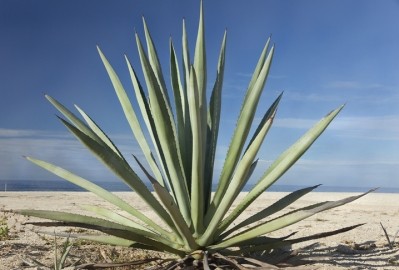Tequila threats - and agave alternatives

It’s no secret that tequila is enjoying new levels of popularity and demand. But that naturally puts pressure on supply: with tequila required to come from a set geographical area with strict parameters. Add to that inflation and higher production costs and tequila alternatives - such as raicilla, bacanora, sotol and even Australian agave - are likely to become more and more popular.
Tequila troubles?
In 2016, tequila commanded a 1.8% share of the global spirits market: that’s now risen to 2.5%, according to IWSR.
Furthermore, the category is expected to grow at a volume CAGR of 7% globally, 2021-2026.
And yet supply is struggling to keep up with unprecedented demand: particularly given the fact it takes several years for agave plants to grow and reach full maturity.
“Agave prices have remained close to record levels for the past three years, at MX$26-28/kg,” said Jose Luis Hermoso, IWSR research director. “And bear in mind that it takes 7-8kg of agave to make one liter of tequila. Prices will only start moderating when there are signs that tequila is cooling down in the key US market.”
That is not expected to happen any time soon: IWSR forecasts 2021-26 volume growth for tequila in the US at a CAGR of +9% and +13% in value terms (Tequila volumes in the US are poised to overtake those of vodka in the country over the same timescale - and in fact, by 2026, the US alone will likely be consuming more tequila than the entire world did in 2021).
As well as rising agave prices, brand owners are also dealing with inflationary pressures linked to pandemic-related issues, including the sourcing and cost of packaging, labor shortages and shipping issues – all of which put pressure on pricing and margins. One fear is that this will impact product quality: with producers resorting to underaged agave plants or using efficient diffusers to keep costs low during production.
How are agave alternatives likely to emerge?
Rising prices and reduced promotional activity for entry-level tequila brands in Mexico (the category’s second largest market) is pushing some mainstream consumers out of the category altogether.
Tequila and mezcal are tightly regulated categories: tequila, for example, must be made from blue agave / agave azul, and must be produced in one of five Mexican states such as Jalisco.
So other spirits without the same strict framework stand ready to take share from tequila, such as Destilado de Agave – a term used to label a spirit distilled from agave but without the batch or producer required to legally label it as mezcal or tequila. As a result, some tequila brands have reformulated from 100% agave tequila to mixto offerings.
And yet IWSR cautions against pinning too many hopes on the mixto segment, because 100% agave tequila carries an important premium image valued by many consumers.
For example, 100% agave tequilas have seen their share of global volumes more than double over the past two decades, expanding from 29% in 2001 to 63% in 2021. Their value share rose to 79% in 2021, thanks to strong demand for blanco and gold tequilas, plus the fast-growing Cristalino segment.
And premium tequila is set to drive the category forward in the future, especially in the dominant US market, where the segment is expected to add more than $15 bn additional value to the overall category between 2021 and 2026.
It’s no surprise, then, that many brand owners are keeping their focus on higher-end tequilas, even while remaining mindful of high agave prices.
Australian agave
The pressures on tequila pricing raise the prospect of category-adjacent challenger products emerging: whether these are those produced outside the legally defined territory for tequila in Mexico or further afield.
From Mexico, agave alternatives such as raicilla (a Mexican agave spirit with own separate terroir), bacanora (distilled from the wild agave pacifica grown in the mountain ranges of Sonora) and sotol (made from Dasylirion wheeleri) can be expected to gain traction.
And further afield, alternative agave spirits are already being produced in countries including Australia, the US and South Africa.
In Australia, for example, the Australian Agave Project is creating a ‘one-of-a-kind, sustainably-produced Australian Agave spirit category’ in The Whitsundays islands on Queensland’s Great Barrier Reef, which mirrors Mexico’s Jalisco state (its agave fields are located 20° south of the equator; compared to Jalisco’s 20° north). The project uses blue weber agave, the same used in the distillation of tequila, which are acclimated to Queensland’s dry tropical north.
The spirit farm is designed to create premium Australian Agave spirit category on an international scale, with the size of the farm and production capacity placing it in the top 25 of the world’s agave spirit producers (and the largest outside Mexico).
“We have an opportunity to focus on quality to produce the highest quality spirit with the lowest cost and energy use," says the project. "Our agave will be distilled using a proprietary process, respecting the traditions of past, but not being bound by them.”
Over a longer timescale, spirits like these could challenge tequila in meeting growing global agave spirit demand, says Brandy Rand, chief strategy officer, IWSR - potentially completely changing the shape of the category.
“There is a genuine long-term threat to the tequila category of locally-grown, agave-based spirits,” she says.
“Agave grows wild in South Africa, Australia and along Mexico’s northern border with the US. An industrialization of these agave plantations to produce spirit of a recognized quality could erode the dominance of tequila in the agave spirit space in the longer term.
"After all, only 20 years ago consumers worldwide would turn to Scotch or Bourbon when thinking about whisk(e)y, but now the choice has expanded widely.”






